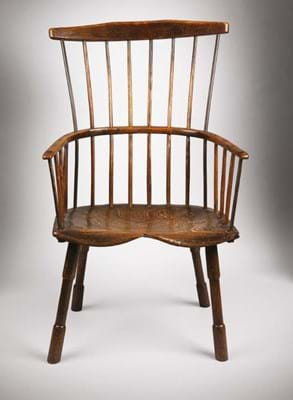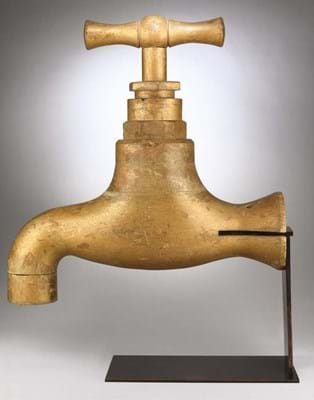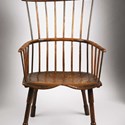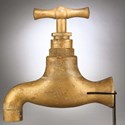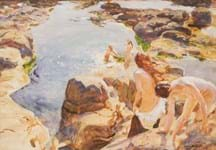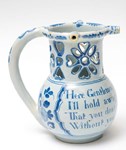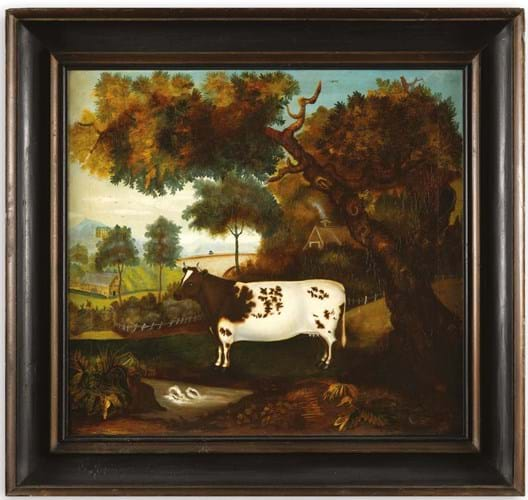
In his annual exhibition, Battersea folk art dealer Robert Young offers a primitive livestock painting of a brown and white cow which was once as obscure in appearance as in its history.
Typically, folk art objects were made for specific purposes and part of their appeal is often evidence of use as well as design.
“In general, we sell things with all their scars,” says Young. The picture in question is a notable exception.
“It was knee-deep in grime, nicotine and smoke. It was almost black, but the condition was great underneath it,” he says.
“We were not dealing with historic, bad restorations. This is the first time it’s been conserved and the white in the picture is still so white.”
Eventually, as conservation work was carried out, an image of a large brown and white cow standing by a stream in a highly detailed and stylised landscape was revealed.
Though the image had been discernible before, it is now possible to fully ‘read’ it.
Dominant image
Livestock in images of this period normally dominate a composition, demonstrating that the prize-winning subjects are desirable for breeding.
In this case, however, the scene is packed with extra elements offering tantalising hints about the setting and history of the work, from the buildings in the background to the anonymous figure on the bridge.
It is destined to remain a mystery. Nothing is known about the commissioner or the artist, and it is a hand entirely new to the dealer. Even though “over 40 years you handle a lot, I’ve never seen another like this” says Young.
The frame, which is original, has been left in its unrestored state.
Further highlights
More than 50 works are included in the gallery’s catalogue for the show, which runs from May 10-18, including other naïve paintings, furniture, sculpture and toys as well as an adjustable candlestick and a boot scraper.
Another highlight is an English plumber’s trade sign in the shape of a tap. Rendered in wood with an oil gilt finish, the c.1940 sign features a handle that can be turned.
A sculptural primitive Georgian comb back Windsor chair, made c.1750 from ash and elm, also features. It is similar to an example from the V&A published in Thomas Crispin’s The English Windsor Chair (1992).
Market awareness
Though in some ways the pieces on offer can seem foreign to contemporary eyes, they are also increasingly attractive to buyers, according to Young.
“Five years ago, folk art was starting to be a term people knew. Now people are hugely aware of it,” he says.
It is a broad field but he is “very fussy” about what he accepts. What he does sell tends to be among the finest examples of their type.
As well as offering these pieces all year round at the south London gallery, he has two major annual outings: The Winter Antiques Show in January and Masterpiece London (June 27-July 3) in the summer.
Plenty more is out there to be uncovered, he says, “living in the upstairs rooms of taverns, storerooms and ordinary houses”.
Folk showcase
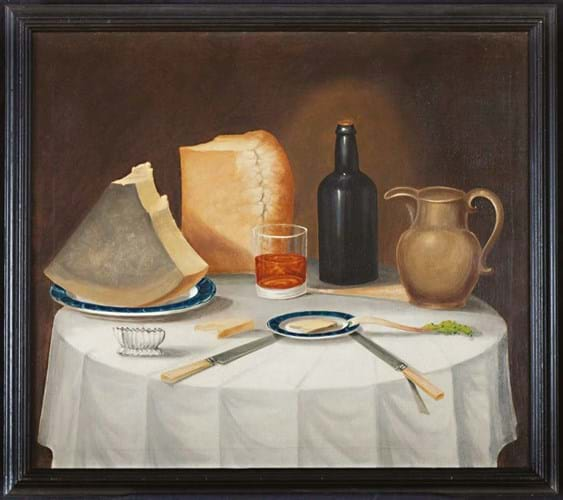
'A Still Life with Cheese Bread and Beer' by James Booth Higginson from the Compton Verney collection. Photography by Jamie Woodley.
Robert Young Antiques hosts An Evening with Compton Verney during its annual exhibition this month.
The evening celebrates the renovation of the Warwickshire institution’s folk art galleries, which house the largest collection of British folk art in the UK.
Gallery manager Annelise Hone will discuss the growing interest and popularity of the field for about an hour, followed by an informal Q&A and discussion.
Admission is free, though there will be an opportunity to make a donation to Compton Verney. Reservation of a place is required. Contact office@robertyoungantiques.com


